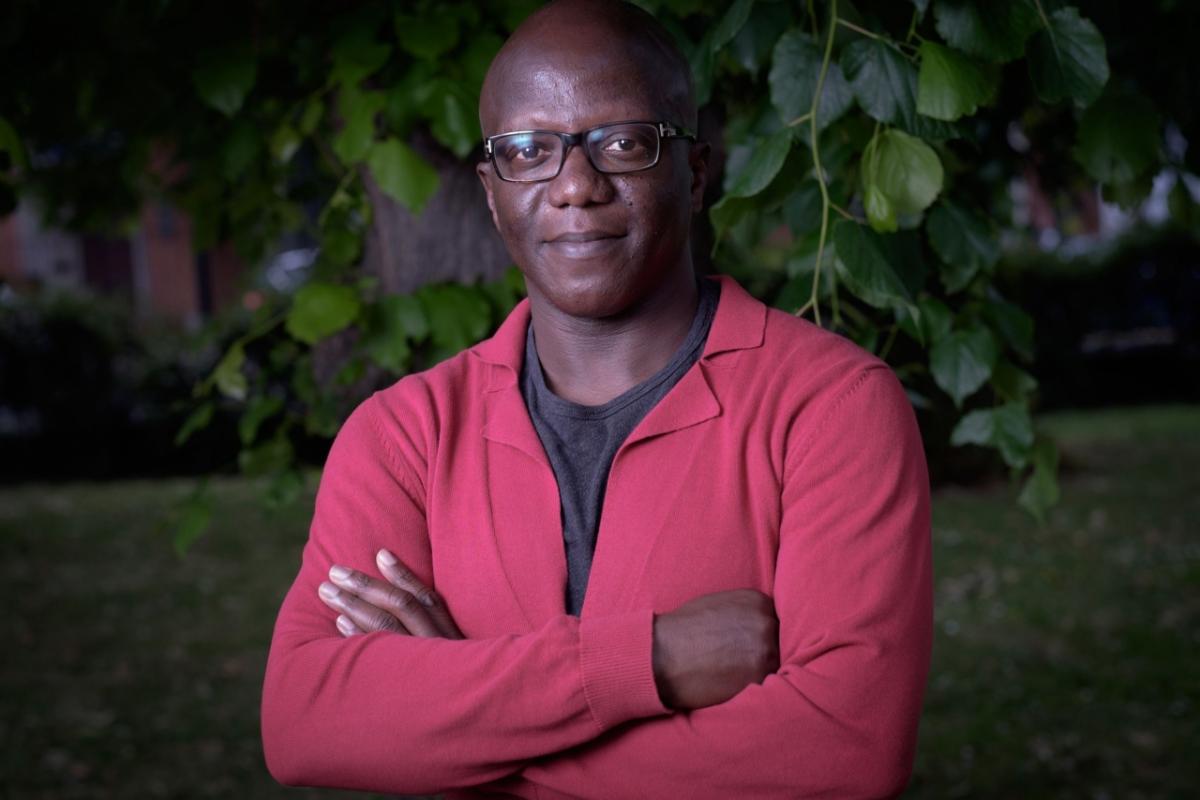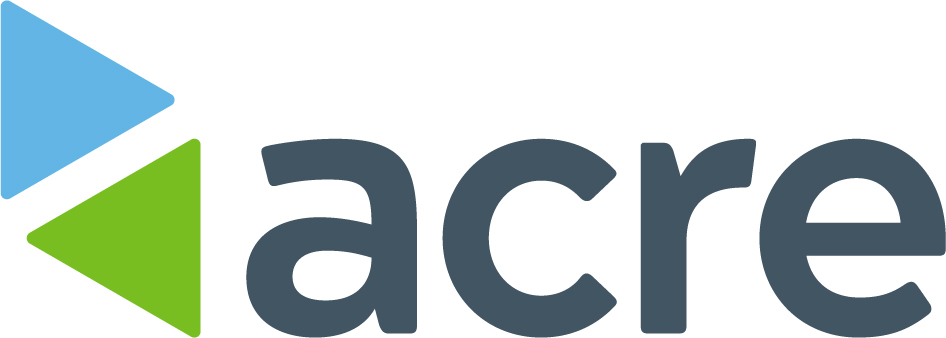The Call to Action for Vulnerability & Courage in Leading Risk
by Kendelle Tekstar, Senior Product Manager at Acre Frameworks

In the midst of the evolution of the health and safety industry, where human skills are being championed with equal weight as technical skills, a call to action has emerged for more courageous leaders. What does it really mean to be a ‘courageous’ leader though? The Acre Frameworks team has been fortunate enough to build a relationship with an individual driving the daring leadership movement, Adé Adeniji.
Adé is passionate about working with individuals to move them from Armoured Leadership to Daring/Courageous Leadership, which has an impact on them as a person, their team/colleagues and their organisation. He is a certified Dare to Lead™️ facilitator (based on the research of Brené Brown) with over 20 years of experience in different areas of the Human Resources function, spanning the public, private and not-for-profit sectors. He was Human Resources Director with Liberty Global Europe, a digital media company, with responsibility for the UK, Netherlands, Spain and Central Europe, and prior to that Head of Human Resources with Guardian News & Media Ltd. Adé has held other HR roles with the Financial Ombudsman Service, ITV, the Foreign & Commonwealth Office, Cabinet Office and the Government Legal Service. Previous clients include BBC, Economist, Philips, Wellcome Trust and Imperial College.
In this article we will explore what a courageous leader looks like and how vulnerability needs to be reframed in terms of risk management through a series of interview questions with Adé. As you are reading, consider: What is your call to courage as a leader?
Let’s get stuck in…
Vulnerability has a negative connotation for a lot of people. Based on your work as a certified Dare to Lead facilitator and qualified coach, how do we need to reframe vulnerability to embrace its benefits?
“Yes, I can understand that negative connotation. I grew up with many myths around vulnerability and it was not something spoken about or expressed. The primary beliefs I came to hold about vulnerability was that it was weakness, unacceptable and something to move away from or bury – very deeply! The research of Dr. Brené Brown is certainly helping reframe the meaning of vulnerability and forms the cornerstone of my work with clients.
Brené defines vulnerability as ‘risk, uncertainty and emotional exposure’. In looking at those three components, we easily see that they are the bedrock of so many aspects of our professional and personal lives. It’s difficult to imagine workplace interpersonal relationships without risk taking, uncertainty and emotional exposure.
In talking about vulnerability in the workplace, I often hear people say that it is something that needs to be kept at the front door. In unpacking what they mean, it often comes down to two main things. They see vulnerability as weakness and showing it in the workplace means making allowances for people to give excuses as to why their performance or behaviour is not up to scratch. The other is that they see expressing it as an opportunity for people to start sharing their deepest, darkest issues. It’s worth highlighting that vulnerability without boundaries, is not vulnerability. It’s oversharing.
Brené’s research highlights that ‘vulnerability is the birthplace of creativity, innovation and change’. When people take that risk, face uncertainty and allow emotional exposure, it brings about connection and more congruent conversations in the workplace."
Where does vulnerability particularly come up for business leaders? And how does it come into play for those professionals with specific responsibilities for managing risk? I think a lot of people would think the last thing you want to be as a company is vulnerable in the face of risks that could make or break your business so let’s debunk that!
“One of the biggest issues facing many business leaders is navigating difficult or challenging conversations. Conflict issues – explicit and implicit – are often brushed under the carpet, and not nipped in the bud at the point of the initial rupture. Vulnerability is required to have those conversations and it cannot be bypassed.
The ‘risks’ highlighted in the context of vulnerability is to do with people and relationships, and not to do with systems and processes. It’s important to make that distinction. It’s crucial for organisations to have processes and systems in place that minimise risk or ‘vulnerabilities’. People are not processes or systems – people manage those processes and systems. Taking vulnerability out of human relationships is like having machines with no emotional intelligence. Those workplaces where people simply rely on their heads or technology are gradually being eroded, to make room for environments where people are able to bring their hearts."
Can you dig deeper into the difference between vulnerability in process and vulnerability in people?
“Vulnerability in people is about building connection, with as little emotional armour as possible. It’s about building trust and creating a culture of psychological safety. Vulnerability in processes means there is a risk in the business – strategic, compliance, operational, financial or reputational – which could have a severe detriment for the organisation at many levels.
Vulnerability in processes can be mitigated or avoided to the benefit of the organisation. Avoiding vulnerability in people has a detrimental impact on the level of human connection within the team or organisation."
What types of behaviours can we expect to see from people who lean into vulnerability and exhibit courage? From your experience, what is the key to inculcating these behaviours into an organisation?
“Leaning into vulnerability means that people will be better at having difficult or challenging conversations, navigating conflict before it becomes an issue for the line management or HR. It means that people are more able to have conversations when their boundaries are crossed. It means that managers don’t simply rely on HR policies to help them deal with problem issues – instead they are able to tackle it, rather than avoid. It means dealing with performance or conduct issues much earlier. It means confronting head on issues around prejudice, micro-aggressions or discrimination, and having the necessary conversations to take action.
Vulnerability needs to be modelled by the leaders and needs to be demonstrated consistently. Through that, others feel that there is a level of psychological safety for them to do the same. These have an impact on employee engagement, wellbeing, motivation, retention and performance."
You mentioned psychological safety, trust, and difficult conversations emerging in some of the consultancy work you have done with businesses that have a big compliance focus. Can you speak further to how the power of vulnerability comes into play in these three areas?
“Navigating those three areas require risk, uncertainty and emotional exposure. They cannot be bypassed, there is no way around it – the only way is through! Vulnerability means being prepared for things not going the way we hoped, and it means talking about it – rather than brushing it under the carpet. It means being honest. It means entering those three areas from a place of win/win. It means leaving the defensive or reactive behaviours at the door. It means being open to listening. It means practicing empathy."
What is a good starting point if someone wants to become a more courageous leader? How can you then make courage contagious in your team and organisation?
“Reading Dare to Lead, by Brené Brown, is a great starting point. In the book, Brené shares her research highlighting that courage can be learnt through the practice of four skill sets – Rumbling with vulnerability, Living into our values, Braving Trust and Learning to rise. Some leaders and teams have organised reading groups and used the book to facilitate discussions. Others have watched one of Brené’s TED Talks, like The Power of Vulnerability, or her Netflix special, The Call to Courage. Any one of these are conversation starters are gentle ways to ignite courageous conversations within the workplace.
Even conversation starters around questions like ‘What does courage look like for us as a team?’ or ‘What is required in order for our team to feel more courageous?’ can be powerful ways to ignite the process of making courage contagious. The modelling of courage by those at the top is also crucial and must not be underestimated. Talking about failures is one approach that some leaders have taken, which gives permission for others to know that vulnerability is allowed and human."
Commentary from a select panel of HSE leaders:
Director of Health, Safety & Wellbeing
Emcor UK
“What resonates for me here most is that vulnerability should not be considered a sign of weakness, but a sign of strength because it enables leaders to create a space that invites others to question and advise. There remains a belief that as a leader we should know everything – in fact, one of my team said recently: “Well, if you don’t know then that’s a worry because you are our leader.’” I see it differently, as I explained to my colleague…
As a leader, my decision making needs to involve the provision of permission to others to give me their perspectives on the challenges at hand. It is then incumbent upon me in my role to robustly test their theories before proceeding to next steps. This is me being vulnerable and accepting that I can’t and don’t know it all. In particular, I won’t always see a situation through the eyes of someone who has different characteristics to me, and that alternative lens is extremely important when making leadership decisions, when the circumstances demand it. This is why vulnerability is core to my leadership approach, and through demonstration (and explanation) I see my role as empowering my team to be vulnerable in their approach too.
Head of Health & Safety
Unite Students
“Opening a recent team meeting with a session on vulnerability and trust led to a completely different feel to our meeting. Instead of getting straight into ‘business as usual’ we set the tone for the meeting, created a safe space for ideas to be raised and challenged and also connected as people rather than just managers representing our various business areas.
We have discussed how to be a courageous leader and realised that you can be courageous in many different ways; raising an opinion that may not be well received, giving feedback immediately after a meeting rather than dwelling on it and taking a different approach to something. Small courageous actions can have a big impact when managing risk and we openly encourage it within our teams.
Head of Safety, Health & Quality – Operations & Collections
Biffa
“I recently read Dare to Lead and the way in which vulnerability and courage are presented is particularly resonant for me in framing their vital importance within my emotional intelligence toolbox. My key learnings were around empathy and its importance when connecting with people, and more specifically how it relates to the way I practise leadership of my team.
For me, it’s essentially about people taking daring steps to influence situations that previously may have been seen as outside of the remit of HSE professionals. It’s about engaging in conversations where we are tackling issues for which we don’t have all the answers and being brave in the face of ‘difficult conversations.'
Being honest, upfront, and confident is vital for my team to effectively work with a wide range of stakeholders and these traits come with embracing vulnerability – traditionally, HSE professionals may have viewed such interactions as being ‘above their pay grade’. If we can all notch up our empathy capability, it will inevitably enable better and more authentic connections with the people we work with on a daily basis, which is fundamental to our individual and collective success."
This article was originally written for and published in Safer Highways England's 6th Edition of their SHL!ve Magazine.

